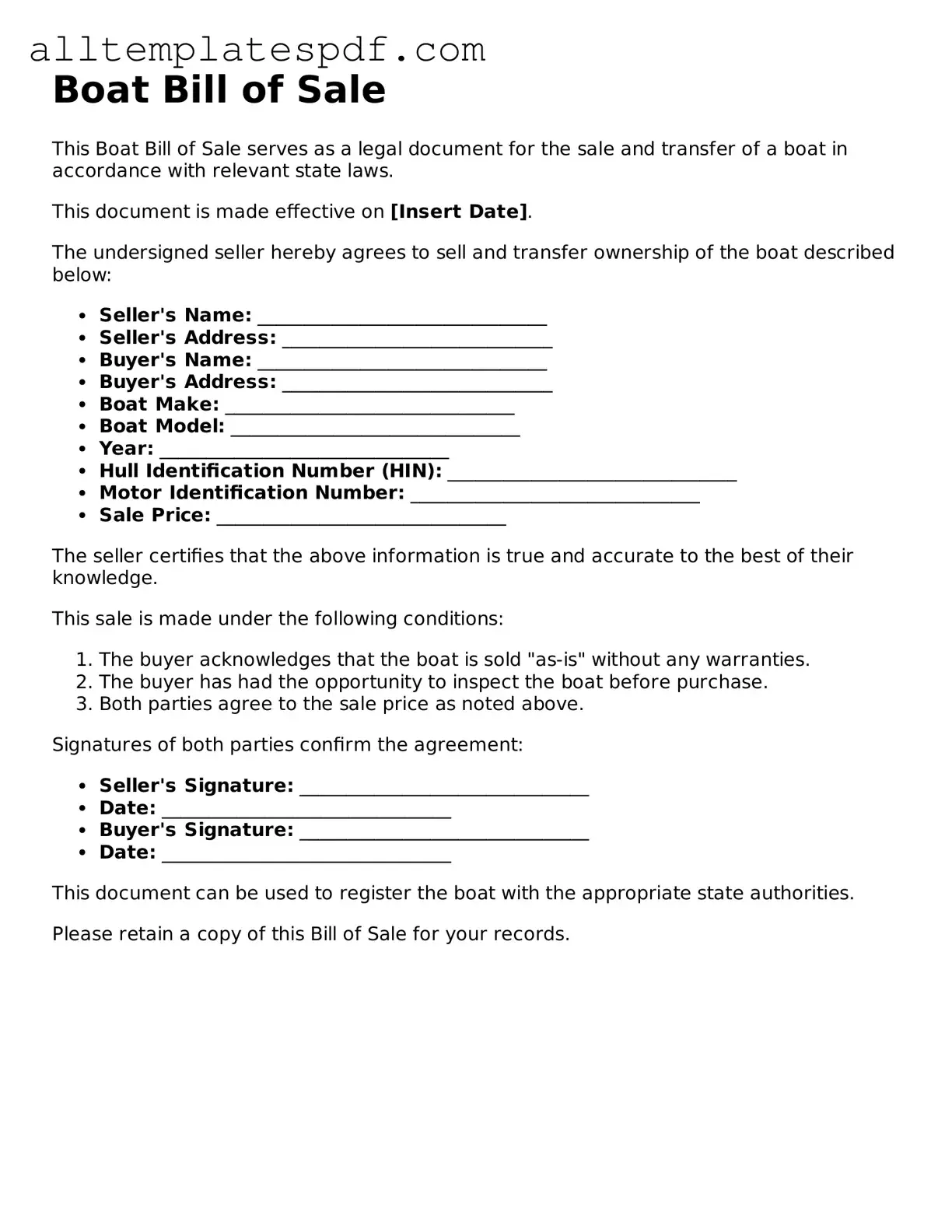Attorney-Approved Boat Bill of Sale Template
The Boat Bill of Sale form is a crucial document that serves as a legal record of the transfer of ownership for a boat. This form protects both the buyer and the seller by detailing the terms of the sale, ensuring a smooth transaction. To get started, fill out the form by clicking the button below.
Open Editor
